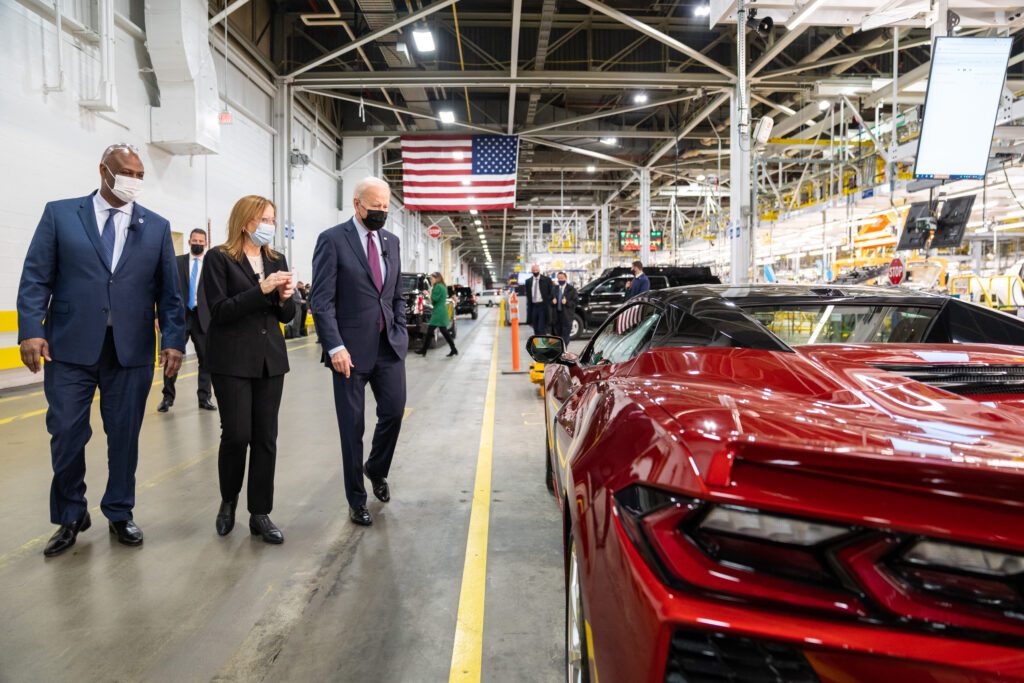Last year, the United States’ rapidly expanding electric vehicle and battery industry once again raked in the lion’s share of large state and local subsidy packages.
While we applaud historic federal efforts to reduce greenhouse gas emissions across the economy, this spending has clearly done little to restrain excessive subsidization at the state and local level. We likewise remain troubled by the terms of these deals, especially the lack of job quality requirements.

Among state and local deals worth at least $50 million—what we call “megadeals”—eight states awarded $5.8 billion to automakers and battery-makers. Two companies, Ford and Scout Motors, a Volkswagen subsidiary, each secured deals worth more than $1 billion from Michigan and South Carolina, respectively.
The total value of megadeal subsidies to the industry fell considerably from the dizzying heights of 2022 when states and localities awarded 17 companies $10.8 billion. However, individual EV-related deals announced last year were just as expensive.
As we noted in a report published this past summer, the federal 45X income tax credit for battery-makers, created as part of the 2022 Inflation Reduction Act, will be sufficient in many cases to fully compensate recipients for their capital expenditures on new facilities.
Consider the $3.5 billion joint venture battery plant General Motors is building with Samsung in New Carlisle, Indiana. With an annual capacity of 30 GWh, the facility stands to generate $1.05 billion in federal 45X income tax credits when fully operational in 2028. By the time the credit phases out in 2032, GM and Samsung will have raked in over $2.6 billion in tax credits. Since companies can elect to treat these as either refundable or transferable, they are effectively as good as cash.
On top of that, the state of Indiana and St. Joseph County larded on another $506 million in grants and tax breaks. Taken together, combined public support amounts to nearly 90% of the companies’ planned investment in the plant.
For GM and Samsung, it’s little ventured, everything gained.
As our recent report also stressed, neither the federal government nor states and localities have meaningfully leveraged these exceedingly generous subsidy packages to extract job quality commitments from recipient companies.
EV-related megadeals awarded in 2023 will cost states and localities $275,000 for every new job created. When inking these deals, companies expected to pay on average $27.39 an hour, or roughly $57,000 a year for a full-time worker. That’s less than what production workers in the auto sector currently make: $30.50 per hour, according to the Bureau of Labor Statistics.
While before the St. Joseph County Council last May, GM disclosed that anticipated starting wages at its new joint venture facility in New Carlisle would average just $24 an hour, inclusive of both hourly and salaried workers.
But that was before the United Auto Workers had something to say about it.
The UAW’s successful strike on the Big Three American automakers last year did more than any state economic development agency to ensure subsidized EV and battery jobs are in fact the “good-paying, union jobs” so frequently invoked to defend the industry’s lavish public support. The Big Three’s non-union competition, including Tesla, promptly responded by boosting pay for their workers too.
While the last quarter of the year brought much chatter about softening demand for EVs and automakers’ delayed or downsized investment plans, there’s little indication that this represents more than a speed bump in the domestic and global market’s continued expansion.
As the industry grows, Good Jobs First will continue demanding state lawmakers and local officials do more to ensure the subsidized electrification of the auto sector benefits workers and their communities, not just wealthy shareholders.